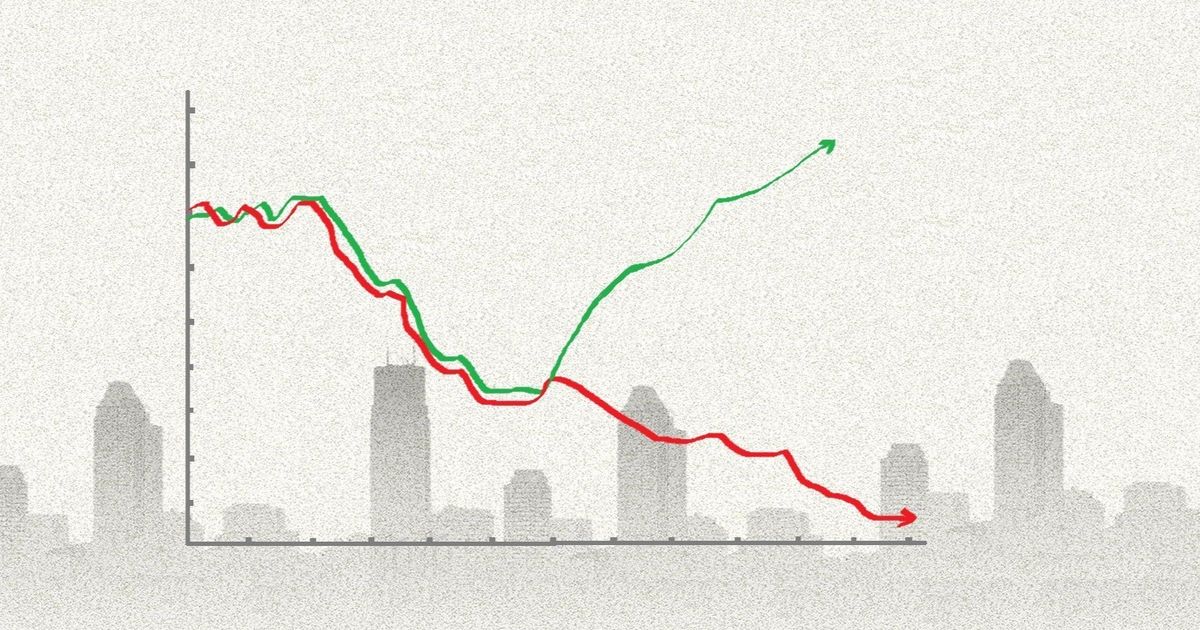During major economic downturns, analysts often use simple visual metaphors to describe recovery patterns: sharp rebounds, prolonged slumps, or uneven progress. Traditional models include the V-shaped recovery, where a swift decline is followed by a rapid rebound, as seen in some economies after the 2008 financial crisis. The U-shaped pattern reflects a longer stagnation before gradual improvement, similar to parts of Europe in the 1970s. A W-shaped recovery indicates a double-dip recession, with a brief upturn followed by another downturn, characteristic of the U.S. economy in the early 1980s. In contrast, an L-shaped recovery describes a prolonged period of stagnation with little to no growth, much like Japan’s experience during its so-called “lost decade.”
However, a newer and more troubling model has emerged in recent years: the K-shaped recovery. Unlike traditional patterns, this model does not depict the pace of recovery but rather highlights growing disparities within an economy. In a K-shaped scenario, different segments of society move in opposing directions—one group sees rising incomes, asset values, and job stability, while another faces declining opportunities, wage stagnation, and eroding purchasing power. This divergence became especially visible after the COVID-19 pandemic, when large corporations and asset owners benefited from surging stock and real estate markets, while low- and middle-income households struggled with job insecurity and inflation.
Typically, higher-income individuals occupy the upward arm of the K. Their financial resilience, access to investment opportunities, and flexible employment allow them to thrive during turbulent times. Conversely, lower-income groups are often on the downward slope, dealing with precarious jobs, wages that fail to keep up with inflation, and reduced economic mobility. This growing imbalance acts as a mirror to deepening social fragmentation.
The real danger of a K-shaped recovery lies not only in economic metrics but also in its societal impact. Widening income inequality can concentrate growth within a narrow segment, weakening the middle class—the primary driver of sustainable economic activity. As consumer spending weakens, overall demand slows, making the economy more fragile. Moreover, if future downturns occur in asset markets, the broader economy may face severe consequences, given that recent growth has been disproportionately driven by a small portion of the population.
In recent years, rising inflation and increasing asset prices have widened the gap between those who own capital and those who rely on wages. While wealth has surged for shareholders and property owners, households with fixed incomes face mounting financial pressure. With growing concerns about potential recessions in major economies, economists are sounding the alarm: any recovery that excludes broad-based participation risks being short-lived and unstable, potentially paving the way for deeper crises ahead.
— news from الشرق مع بلومبرغ
— News Original —
What Is a K-Shaped Economic Recovery and Why Does It Cause So Much Concern?
During every major economic crisis, experts look for a simple way to explain what is happening: Does the economy rebound quickly? Does it take longer? Or does it remain stuck in recession? Thus, shapes such as V, U, W, and L emerged to illustrate recovery paths.
But in modern crises, a new and uncomfortable pattern has emerged: the K-shaped recovery, which does not describe speed as much as it reveals the extent of disparity between those who benefit and those who suffer within the same economy.
Traditional Recovery Patterns: A History of Ups and Downs
For decades, economists have used various shapes to summarize recovery trajectories. A V-shaped recovery occurs when an economy quickly rebounds after a sharp drop, as seen in some countries after the 2008 crisis. A U-shaped recovery reflects a prolonged recession before a gradual return, similar to European experiences in the 1970s. There is also the W-shaped recovery, combining a short upswing followed by another downturn, characteristic of the U.S. economy in the early 1980s.
In stark contrast stands the L-shaped recovery, trapping an economy in a long stagnation without growth, as occurred in Japan during its “lost decade.”
Letter K: When the Economy Moves in Two Opposite Directions
In a K-shaped recovery, not everyone follows the same path. One segment of the economy rises strongly, while another declines in the opposite direction. The stock prices and home values of certain groups may increase, while others face deteriorating conditions, even though overall indicators suggest growth. This pattern became evident after the coronavirus pandemic, when large corporations and asset owners benefited from rising markets, while low- and middle-income individuals suffered from reduced job opportunities and declining purchasing power.
Who Wins and Who Loses? The Path Is Not the Same for Everyone
High-income groups often find themselves on the upward arm of the K. Their investment assets rise in value, their jobs are more flexible, and their savings provide room to maneuver during crises. In contrast, low-income earners are on the downward side: more precarious jobs, income that does not keep pace with inflation, and gradually eroding purchasing power, making them more vulnerable to shocks. Thus, the K shape becomes a mirror of an expanding social divide.
Why Is This Type of Recovery Dangerous?
The real danger of a K-shaped recovery lies not only in its economic impact but also in its social consequences. Widening income gaps confine growth to a small segment, while the middle class—the main engine of any stable economy—declines. Reduced spending capacity directly affects aggregate demand, slowing economic momentum and increasing systemic fragility. With this disparity continuing, any downturn in stock or real estate markets could spark a broader crisis, as most growth has relied on just one segment.
Why Has K Returned to the Forefront Now?
In recent years, after waves of inflation and rising asset prices, the gap between those who own and those who do not has grown significantly. Wealth has flourished for shareholders and property owners, while fixed-income households face mounting living pressures. With increasing talk of a potential recession in major economies, economists are sounding the alarm: any recovery that does not include everyone will remain temporary and fragile, potentially opening the door to deeper crises in the future.
